Dual-Memory Model for Incremental Learning: The Handwriting Recognition Use Case
Mélanie Piot,
Bérangère Bourdoulous,
Aurelia Deshayes,
Lionel Prevost

Auto-TLDR; A dual memory model for handwriting recognition
Similar papers
Semi-Supervised Class Incremental Learning
Alexis Lechat, Stéphane Herbin, Frederic Jurie

Auto-TLDR; incremental class learning with non-annotated batches
Abstract Slides Poster Similar
Class-Incremental Learning with Pre-Allocated Fixed Classifiers
Federico Pernici, Matteo Bruni, Claudio Baecchi, Francesco Turchini, Alberto Del Bimbo

Auto-TLDR; Class-Incremental Learning with Pre-allocated Output Nodes for Fixed Classifier
Abstract Slides Poster Similar
Rethinking Experience Replay: A Bag of Tricks for Continual Learning
Pietro Buzzega, Matteo Boschini, Angelo Porrello, Simone Calderara

Auto-TLDR; Experience Replay for Continual Learning: A Practical Approach
Abstract Slides Poster Similar
Energy Minimum Regularization in Continual Learning

Auto-TLDR; Energy Minimization Regularization for Continuous Learning
Class-Incremental Learning with Topological Schemas of Memory Spaces
Xinyuan Chang, Xiaoyu Tao, Xiaopeng Hong, Xing Wei, Wei Ke, Yihong Gong

Auto-TLDR; Class-incremental Learning with Topological Schematic Model
Abstract Slides Poster Similar
Naturally Constrained Online Expectation Maximization
Daniela Pamplona, Antoine Manzanera
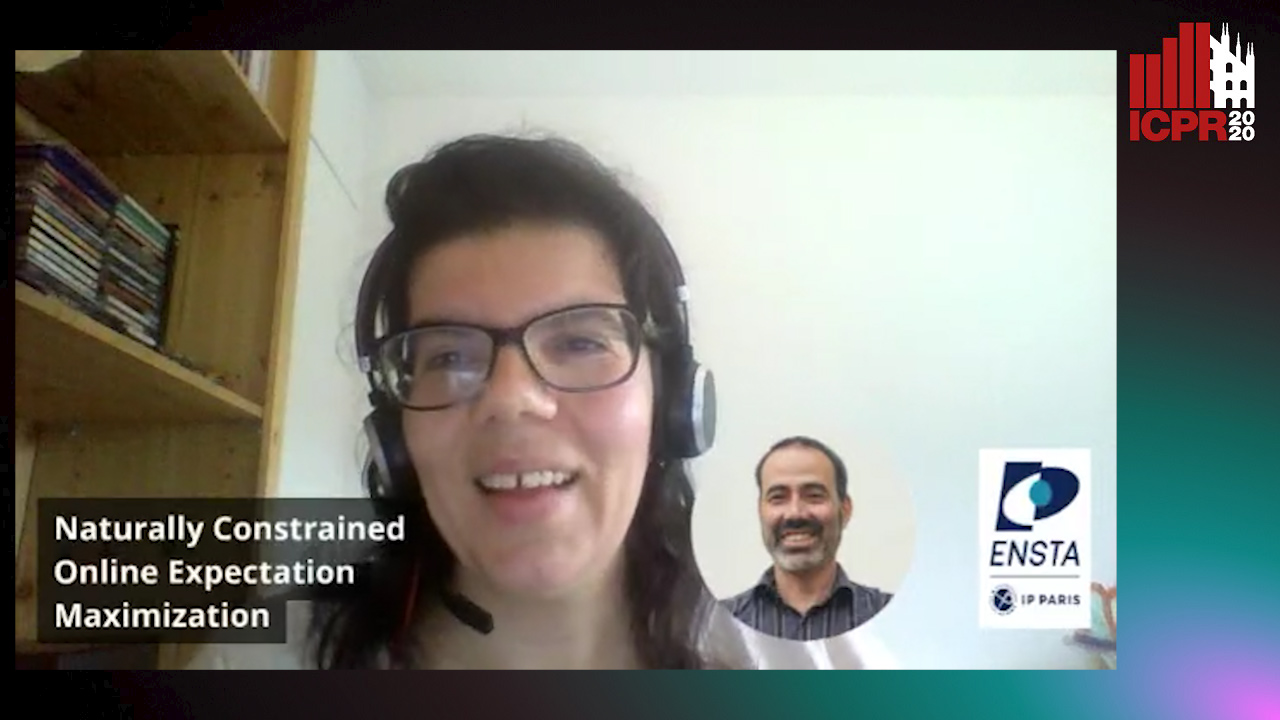
Auto-TLDR; Constrained Online Expectation-Maximization for Probabilistic Principal Components Analysis
Abstract Slides Poster Similar
RSAC: Regularized Subspace Approximation Classifier for Lightweight Continuous Learning

Auto-TLDR; Regularized Subspace Approximation Classifier for Lightweight Continuous Learning
Abstract Slides Poster Similar
Selecting Useful Knowledge from Previous Tasks for Future Learning in a Single Network
Feifei Shi, Peng Wang, Zhongchao Shi, Yong Rui

Auto-TLDR; Continual Learning with Gradient-based Threshold Threshold
Abstract Slides Poster Similar
Learning with Delayed Feedback
Pranavan Theivendiram, Terence Sim

Auto-TLDR; Unsupervised Machine Learning with Delayed Feedback
Abstract Slides Poster Similar
Algorithm Recommendation for Data Streams
Jáder Martins Camboim De Sá, Andre Luis Debiaso Rossi, Gustavo Enrique De Almeida Prado Alves Batista, Luís Paulo Faina Garcia

Auto-TLDR; Meta-Learning for Algorithm Selection in Time-Changing Data Streams
Abstract Slides Poster Similar
Pseudo Rehearsal Using Non Photo-Realistic Images
Bhasker Sri Harsha Suri, Kalidas Yeturu

Auto-TLDR; Pseudo-Rehearsing for Catastrophic Forgetting
Abstract Slides Poster Similar
ARCADe: A Rapid Continual Anomaly Detector
Ahmed Frikha, Denis Krompass, Volker Tresp

Auto-TLDR; ARCADe: A Meta-Learning Approach for Continuous Anomaly Detection
Abstract Slides Poster Similar
Decision Snippet Features
Pascal Welke, Fouad Alkhoury, Christian Bauckhage, Stefan Wrobel
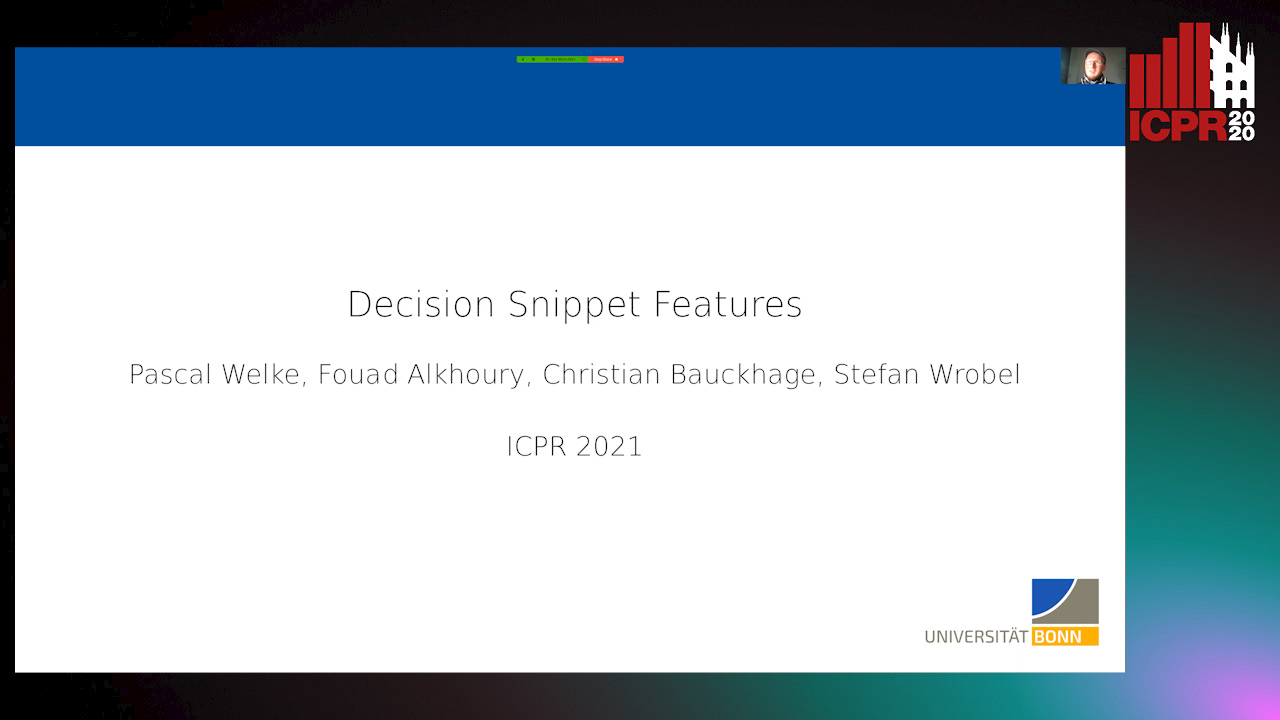
Auto-TLDR; Decision Snippet Features for Interpretability
Abstract Slides Poster Similar
A Novel Random Forest Dissimilarity Measure for Multi-View Learning
Hongliu Cao, Simon Bernard, Robert Sabourin, Laurent Heutte

Auto-TLDR; Multi-view Learning with Random Forest Relation Measure and Instance Hardness
Abstract Slides Poster Similar
Sequential Domain Adaptation through Elastic Weight Consolidation for Sentiment Analysis
Avinash Madasu, Anvesh Rao Vijjini

Auto-TLDR; Sequential Domain Adaptation using Elastic Weight Consolidation for Sentiment Analysis
Abstract Slides Poster Similar
On Learning Random Forests for Random Forest Clustering
Manuele Bicego, Francisco Escolano

Auto-TLDR; Learning Random Forests for Clustering
Abstract Slides Poster Similar
Drift Anticipation with Forgetting to Improve Evolving Fuzzy System
Clément Leroy, Eric Anquetil, Nathalie Girard

Auto-TLDR; A coherent method to integrate forgetting in Evolving Fuzzy System
Abstract Slides Poster Similar
Proximity Isolation Forests
Antonella Mensi, Manuele Bicego, David Tax

Auto-TLDR; Proximity Isolation Forests for Non-vectorial Data
Abstract Slides Poster Similar
Personalized Models in Human Activity Recognition Using Deep Learning
Hamza Amrani, Daniela Micucci, Paolo Napoletano

Auto-TLDR; Incremental Learning for Personalized Human Activity Recognition
Abstract Slides Poster Similar
Hierarchical Routing Mixture of Experts
Wenbo Zhao, Yang Gao, Shahan Ali Memon, Bhiksha Raj, Rita Singh

Auto-TLDR; A Binary Tree-structured Hierarchical Routing Mixture of Experts for Regression
Abstract Slides Poster Similar
A Close Look at Deep Learning with Small Data

Auto-TLDR; Low-Complex Neural Networks for Small Data Conditions
Abstract Slides Poster Similar
Deep Transfer Learning for Alzheimer’s Disease Detection
Nicole Cilia, Claudio De Stefano, Francesco Fontanella, Claudio Marrocco, Mario Molinara, Alessandra Scotto Di Freca

Auto-TLDR; Automatic Detection of Handwriting Alterations for Alzheimer's Disease Diagnosis using Dynamic Features
Abstract Slides Poster Similar
A Heuristic-Based Decision Tree for Connected Components Labeling of 3D Volumes
Maximilian Söchting, Stefano Allegretti, Federico Bolelli, Costantino Grana
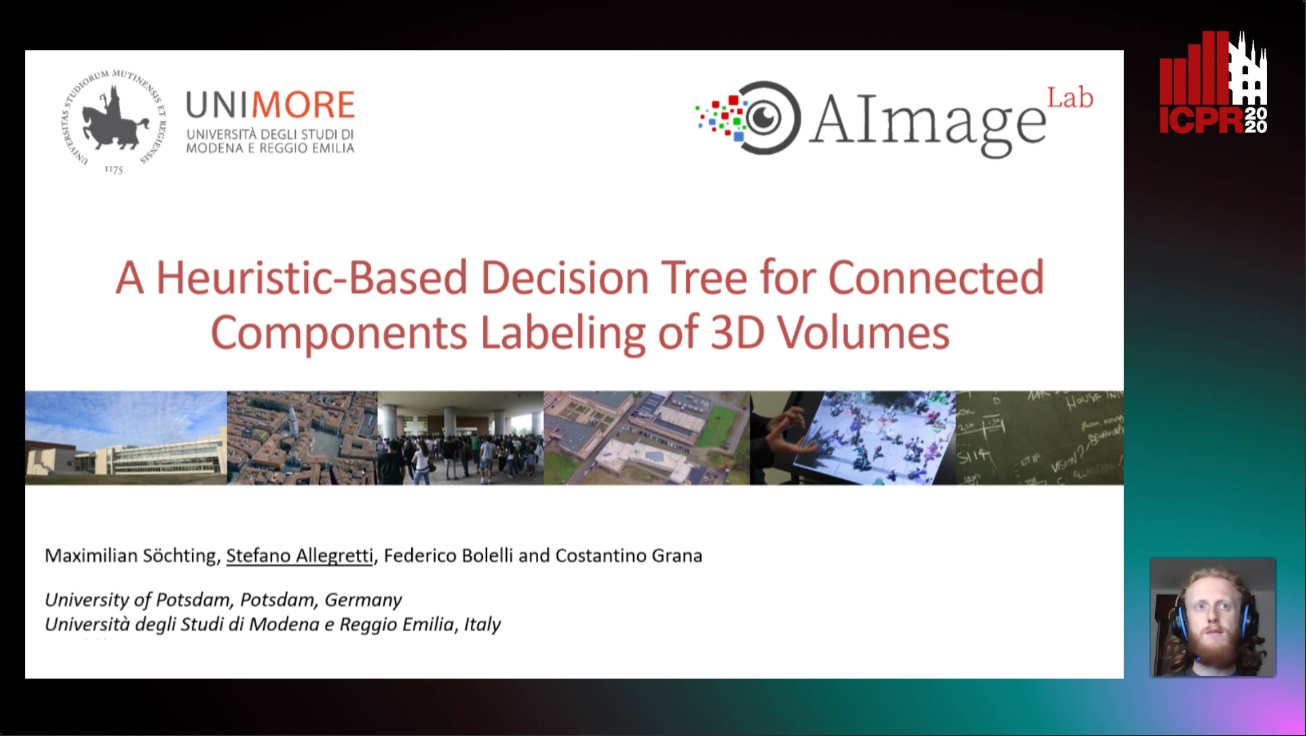
Auto-TLDR; Entropy Partitioning Decision Tree for Connected Components Labeling
Abstract Slides Poster Similar
Multimodal Side-Tuning for Document Classification
Stefano Zingaro, Giuseppe Lisanti, Maurizio Gabbrielli

Auto-TLDR; Side-tuning for Multimodal Document Classification
Abstract Slides Poster Similar
How to Define a Rejection Class Based on Model Learning?
Sarah Laroui, Xavier Descombes, Aurelia Vernay, Florent Villiers, Francois Villalba, Eric Debreuve

Auto-TLDR; An innovative learning strategy for supervised classification that is able, by design, to reject a sample as not belonging to any of the known classes
Abstract Slides Poster Similar
Learning Stable Deep Predictive Coding Networks with Weight Norm Supervision

Auto-TLDR; Stability of Predictive Coding Network with Weight Norm Supervision
Abstract Slides Poster Similar
Automatic Tuberculosis Detection Using Chest X-Ray Analysis with Position Enhanced Structural Information
Hermann Jepdjio Nkouanga, Szilard Vajda

Auto-TLDR; Automatic Chest X-ray Screening for Tuberculosis in Rural Population using Localized Region on Interest
Abstract Slides Poster Similar
Classification of Spatially Enriched Pixel Time Series with Convolutional Neural Networks
Mohamed Chelali, Camille Kurtz, Anne Puissant, Nicole Vincent

Auto-TLDR; Spatio-Temporal Features Extraction from Satellite Image Time Series Using Random Walk
Abstract Slides Poster Similar
Incrementally Zero-Shot Detection by an Extreme Value Analyzer
Sixiao Zheng, Yanwei Fu, Yanxi Hou

Auto-TLDR; IZSD-EVer: Incremental Zero-Shot Detection for Incremental Learning
Exploring Spatial-Temporal Representations for fNIRS-based Intimacy Detection via an Attention-enhanced Cascade Convolutional Recurrent Neural Network
Chao Li, Qian Zhang, Ziping Zhao

Auto-TLDR; Intimate Relationship Prediction by Attention-enhanced Cascade Convolutional Recurrent Neural Network Using Functional Near-Infrared Spectroscopy
Abstract Slides Poster Similar
Mean Decision Rules Method with Smart Sampling for Fast Large-Scale Binary SVM Classification
Alexandra Makarova, Mikhail Kurbakov, Valentina Sulimova
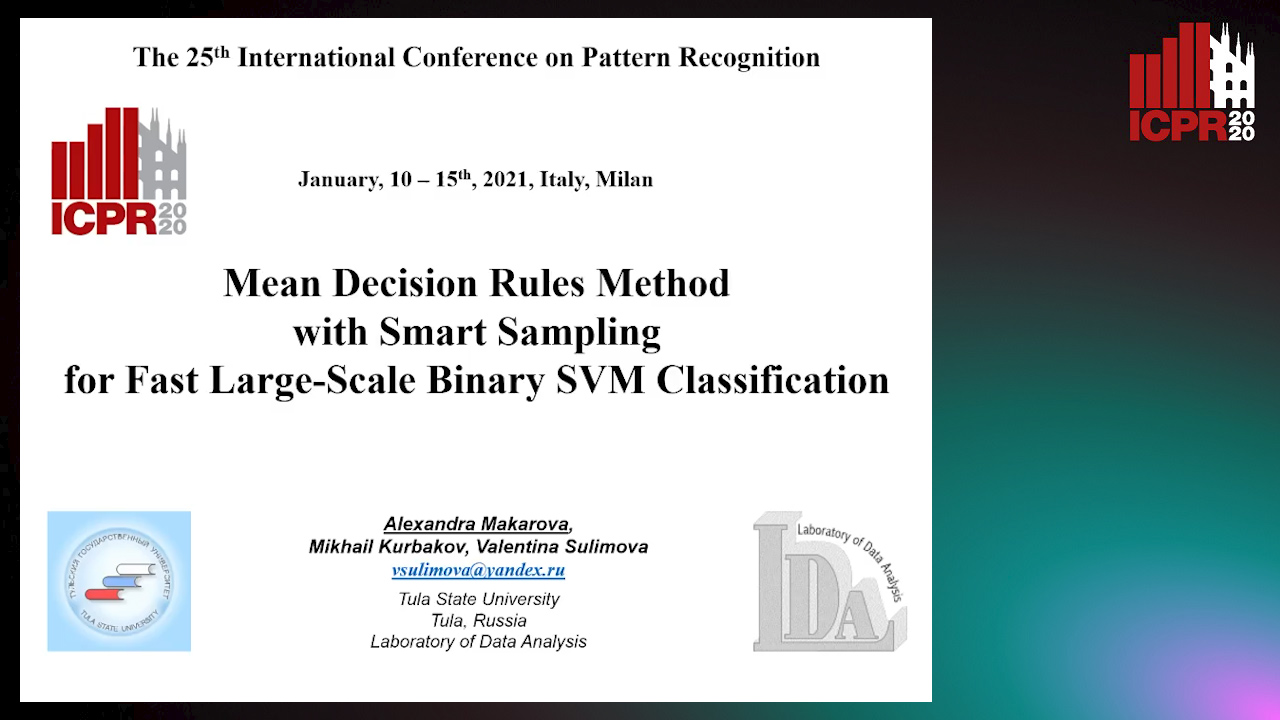
Auto-TLDR; Improving Mean Decision Rule for Large-Scale Binary SVM Problems
Abstract Slides Poster Similar
An Adaptive Video-To-Video Face Identification System Based on Self-Training
Eric Lopez-Lopez, Carlos V. Regueiro, Xosé M. Pardo

Auto-TLDR; Adaptive Video-to-Video Face Recognition using Dynamic Ensembles of SVM's
Abstract Slides Poster Similar
The Effect of Multi-Step Methods on Overestimation in Deep Reinforcement Learning
Lingheng Meng, Rob Gorbet, Dana Kulić
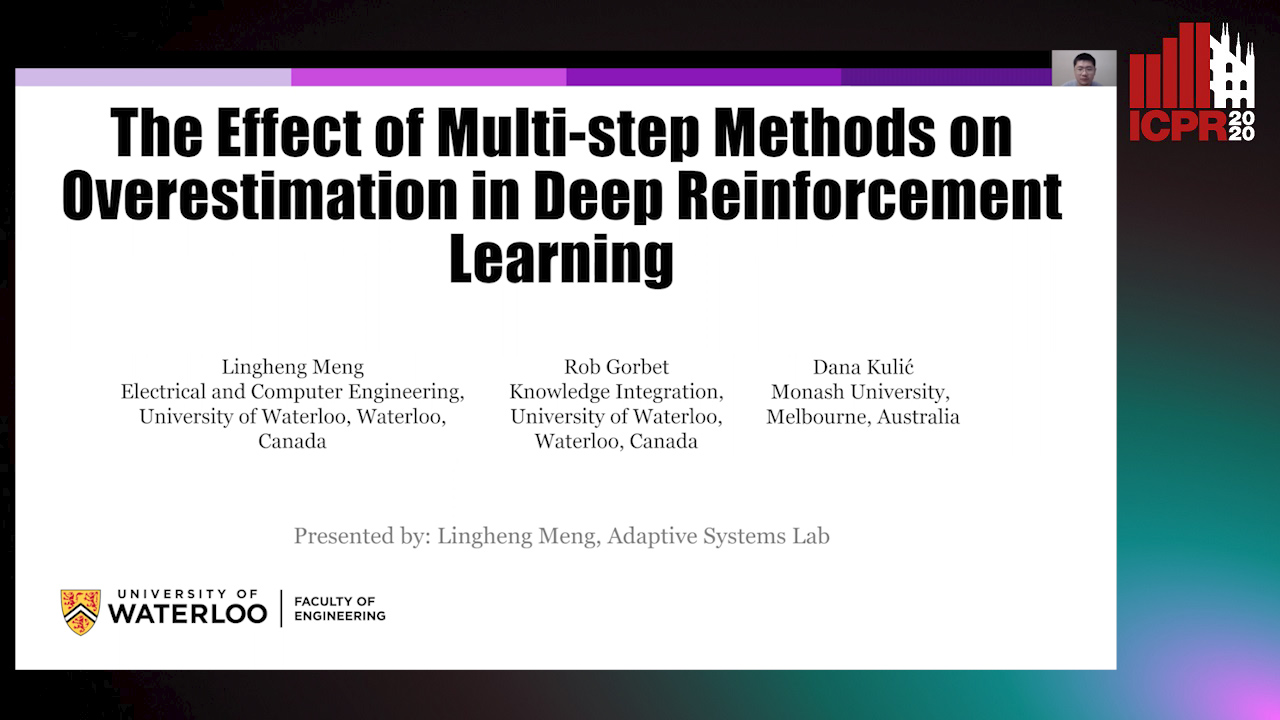
Auto-TLDR; Multi-Step DDPG for Deep Reinforcement Learning
Abstract Slides Poster Similar
The HisClima Database: Historical Weather Logs for Automatic Transcription and Information Extraction
Verónica Romero, Joan Andreu Sánchez
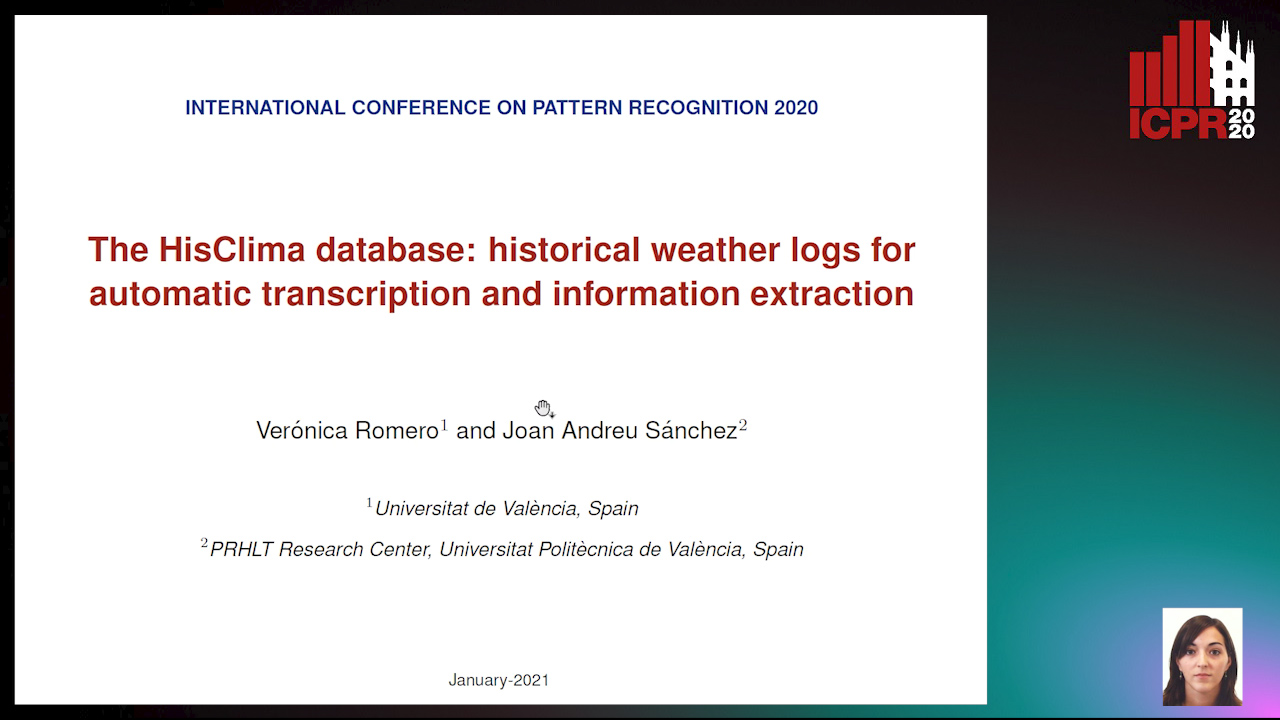
Auto-TLDR; Automatic Handwritten Text Recognition and Information Extraction from Historical Weather Logs
Abstract Slides Poster Similar
Cross-People Mobile-Phone Based Airwriting Character Recognition
Yunzhe Li, Hui Zheng, He Zhu, Haojun Ai, Xiaowei Dong
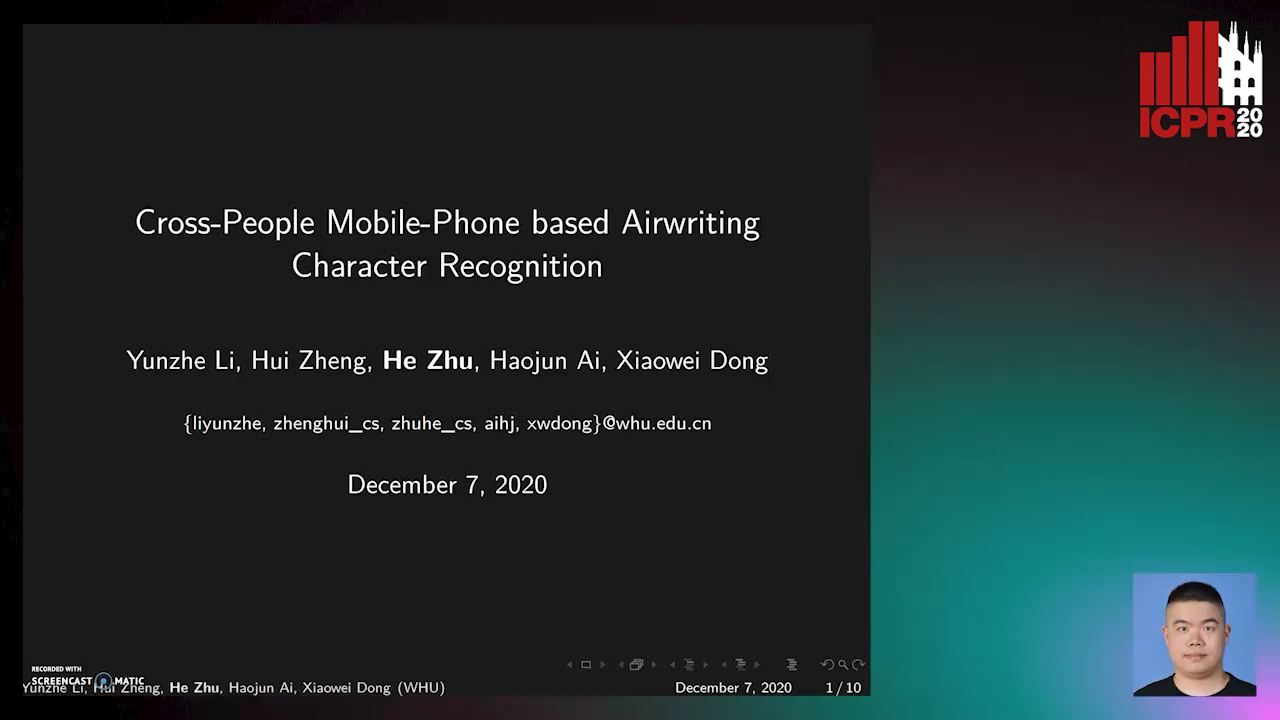
Auto-TLDR; Cross-People Airwriting Recognition via Motion Sensor Signal via Deep Neural Network
Abstract Slides Poster Similar
Self-Supervised Joint Encoding of Motion and Appearance for First Person Action Recognition
Mirco Planamente, Andrea Bottino, Barbara Caputo

Auto-TLDR; A Single Stream Architecture for Egocentric Action Recognition from the First-Person Point of View
Abstract Slides Poster Similar
Recursive Convolutional Neural Networks for Epigenomics
Aikaterini Symeonidi, Anguelos Nicolaou, Frank Johannes, Vincent Christlein
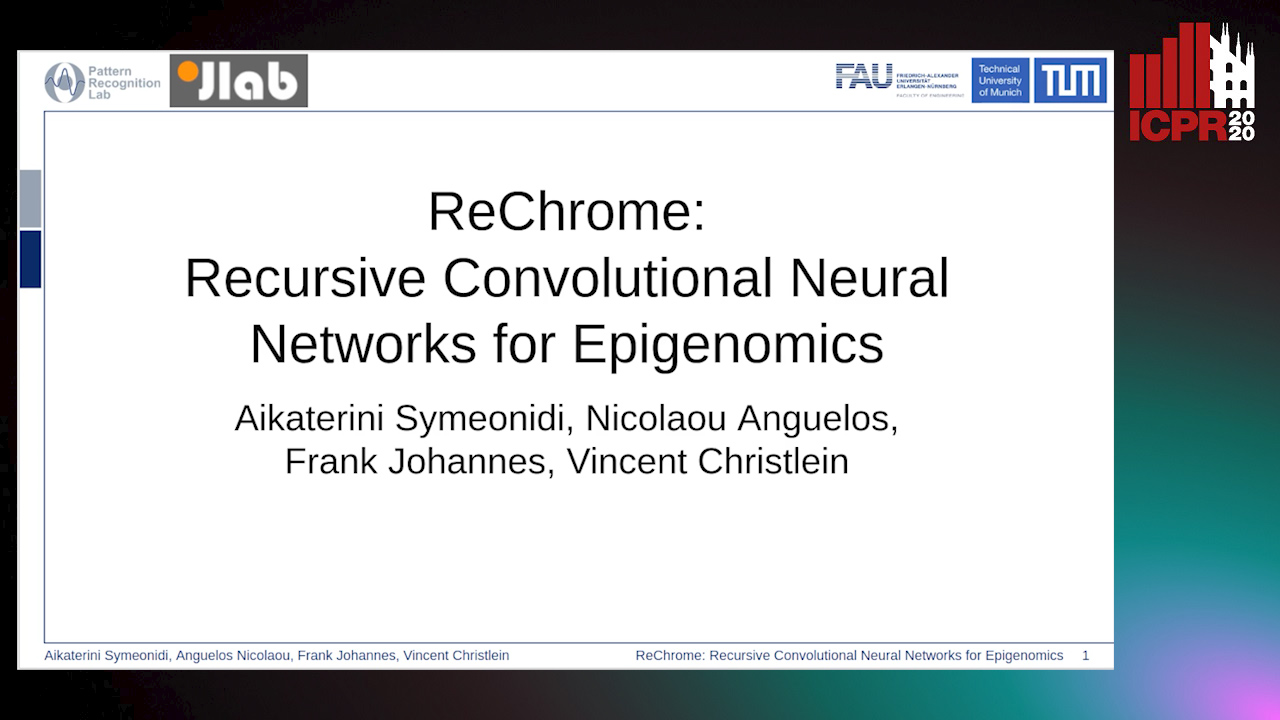
Auto-TLDR; Recursive Convolutional Neural Networks for Epigenomic Data Analysis
Abstract Slides Poster Similar
Location Prediction in Real Homes of Older Adults based on K-Means in Low-Resolution Depth Videos
Simon Simonsson, Flávia Dias Casagrande, Evi Zouganeli
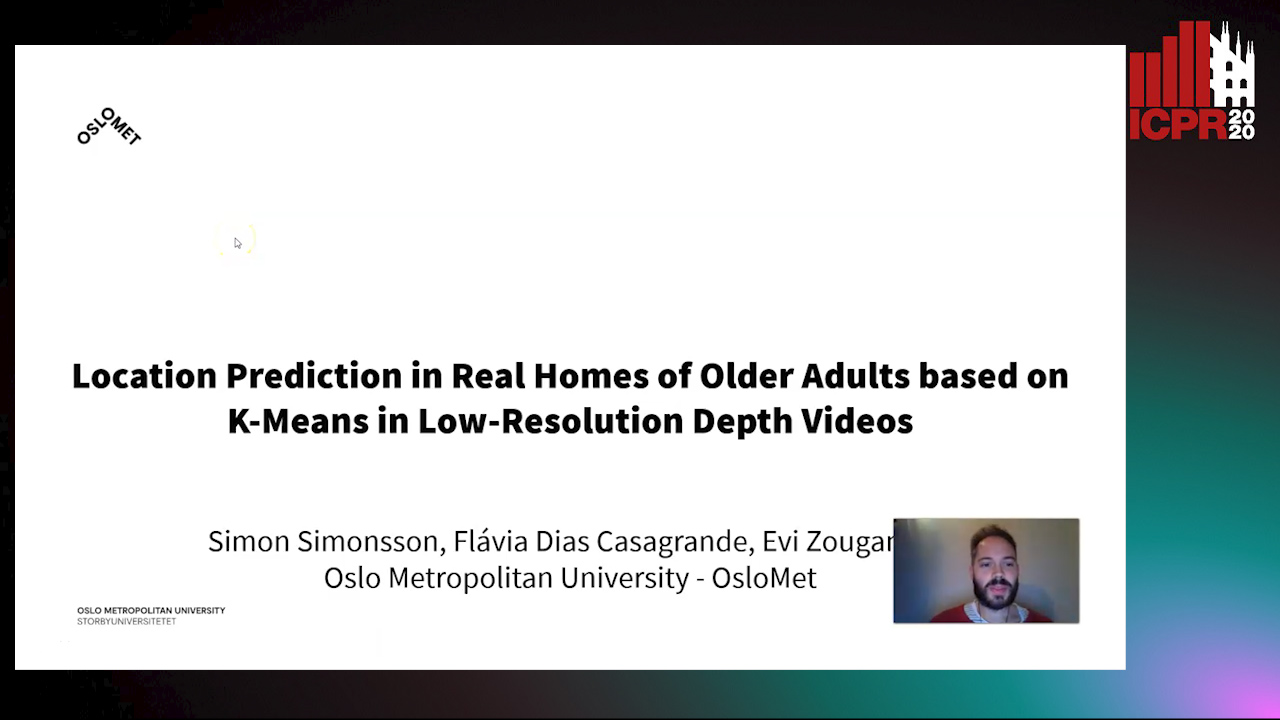
Auto-TLDR; Semi-supervised Learning for Location Recognition and Prediction in Smart Homes using Depth Video Cameras
Abstract Slides Poster Similar
RNN Training along Locally Optimal Trajectories via Frank-Wolfe Algorithm
Yun Yue, Ming Li, Venkatesh Saligrama, Ziming Zhang

Auto-TLDR; Frank-Wolfe Algorithm for Efficient Training of RNNs
Abstract Slides Poster Similar
Compression Strategies and Space-Conscious Representations for Deep Neural Networks
Giosuè Marinò, Gregorio Ghidoli, Marco Frasca, Dario Malchiodi

Auto-TLDR; Compression of Large Convolutional Neural Networks by Weight Pruning and Quantization
Abstract Slides Poster Similar
Recursive Recognition of Offline Handwritten Mathematical Expressions
Marco Cotogni, Claudio Cusano, Antonino Nocera

Auto-TLDR; Online Handwritten Mathematical Expression Recognition with Recurrent Neural Network
Abstract Slides Poster Similar
Detecting and Adapting to Crisis Pattern with Context Based Deep Reinforcement Learning
Eric Benhamou, David Saltiel Saltiel, Jean-Jacques Ohana Ohana, Jamal Atif Atif

Auto-TLDR; Deep Reinforcement Learning for Financial Crisis Detection and Dis-Investment
Abstract Slides Poster Similar
Feature Engineering and Stacked Echo State Networks for Musical Onset Detection
Peter Steiner, Azarakhsh Jalalvand, Simon Stone, Peter Birkholz

Auto-TLDR; Echo State Networks for Onset Detection in Music Analysis
Abstract Slides Poster Similar
Creating Classifier Ensembles through Meta-Heuristic Algorithms for Aerial Scene Classification
Álvaro Roberto Ferreira Jr., Gustavo Gustavo Henrique De Rosa, Joao Paulo Papa, Gustavo Carneiro, Fabio Augusto Faria
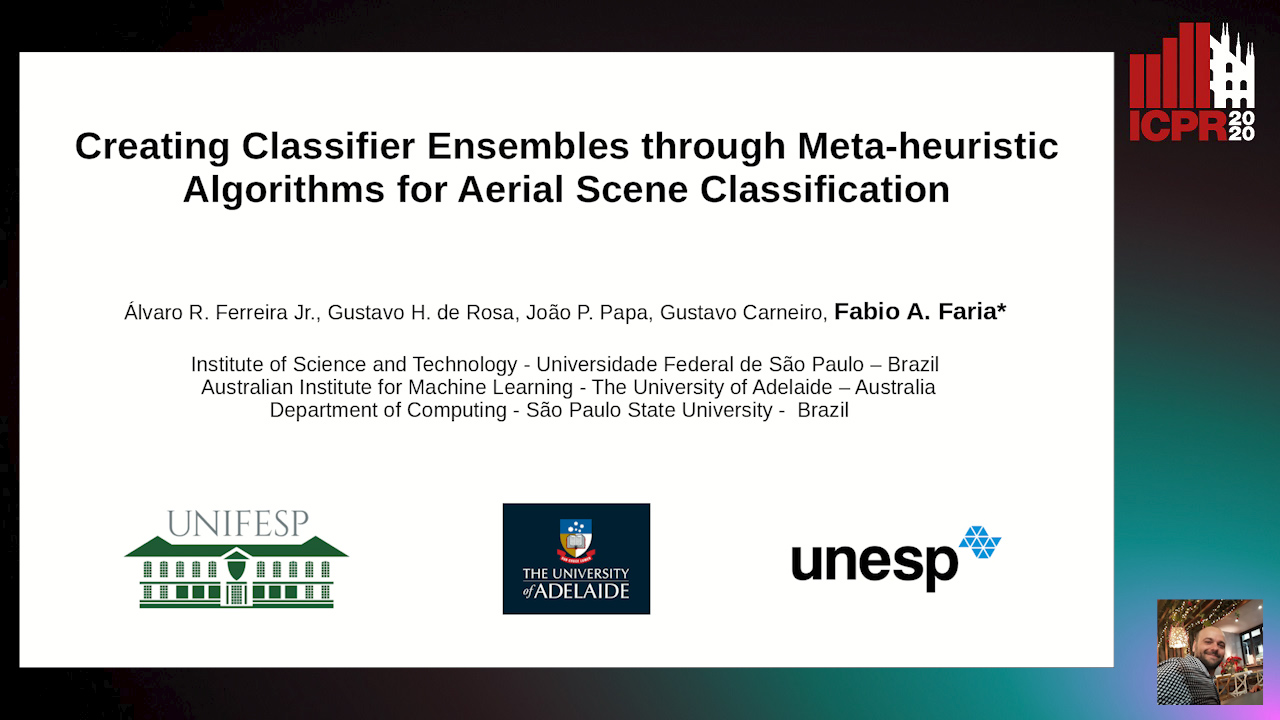
Auto-TLDR; Univariate Marginal Distribution Algorithm for Aerial Scene Classification Using Meta-Heuristic Optimization
Abstract Slides Poster Similar
Smart Inference for Multidigit Convolutional Neural Network Based Barcode Decoding
Duy-Thao Do, Tolcha Yalew, Tae Joon Jun, Daeyoung Kim

Auto-TLDR; Smart Inference for Barcode Decoding using Deep Convolutional Neural Network
Abstract Slides Poster Similar
Conditional Multi-Task Learning for Plant Disease Identification
Sue Han Lee, Herve Goëau, Pierre Bonnet, Alexis Joly

Auto-TLDR; A conditional multi-task learning approach for plant disease identification
Abstract Slides Poster Similar
Handwritten Digit String Recognition Using Deep Autoencoder Based Segmentation and ResNet Based Recognition Approach
Anuran Chakraborty, Rajonya De, Samir Malakar, Friedhelm Schwenker, Ram Sarkar
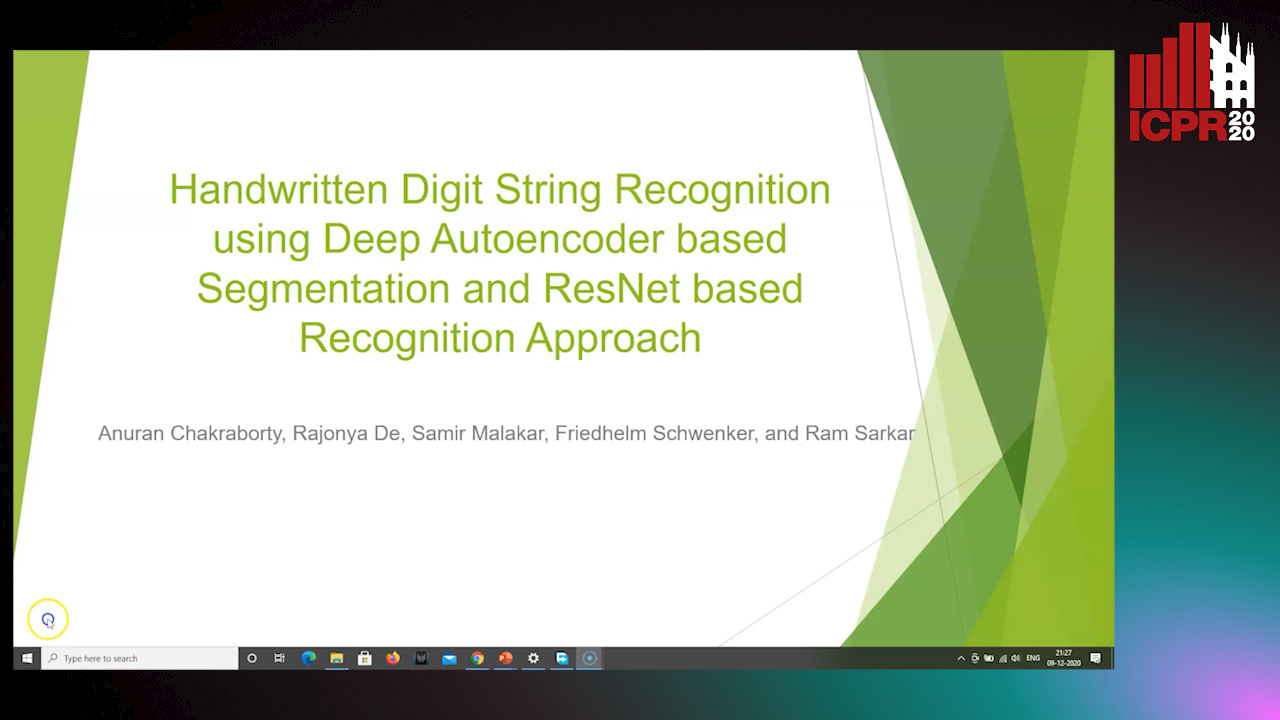
Auto-TLDR; Handwritten Digit Strings Recognition Using Residual Network and Deep Autoencoder Based Segmentation
Abstract Slides Poster Similar
Continuous Learning of Face Attribute Synthesis
Ning Xin, Shaohui Xu, Fangzhe Nan, Xiaoli Dong, Weijun Li, Yuanzhou Yao

Auto-TLDR; Continuous Learning for Face Attribute Synthesis
Abstract Slides Poster Similar